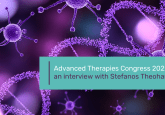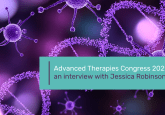Navigating the regulatory space of cell and gene therapy: an interview with Nneka Onwudiwe

We spoke to Nneka Onwudiwe, former FDA Patient-reported outcomes and Pharmacoeconomics Regulatory Review Officer, about cell and gene therapy regulation. Here she discusses the regulatory challenges the industry is facing and how to navigate the regulatory framework to develop a product that is viable in the marketplace.
Please introduce yourself and tell us about your experience in cell and gene therapy
I am a former Food and Drug Administration employee. I was there for about eight years and since then I’ve been consulting in the cell and gene therapy space, mainly in oncology.
What are the greatest challenges faced by the industry?
In the US market there are fewer challenges compared to the European market. In the European market you have to balance patient safety and privacy with innovation. There are a lot of regulations in place and startups, in particular, are finding it very difficult to navigate, especially when working with limited resources. In contrast, the US does a good job of funding small startups at the university level. So going from academia and basic research to licensing the product with a large pharma company or venture capitalist is not as difficult.
What advice would you give to smaller startups in abiding to regulation while being successful?
The regulations are in place to create a framework that promotes public health. It is not there to impede innovation. I think that understanding the regulatory framework in each particular market is really important. Understand who the key players are and where you can leverage resources, as well as build partnerships in manufacturing, licensing and clinical development. As a startup, understanding the competitive market landscape is important, because it’s not just about getting a product funded through basic research and into the clinic. You also want a product that is viable in the marketplace. .
As you have said, European regulations and US regulations have their differences. What do you think you have gained from this conference today, based in Europe?
It’s a fast-changing area. There are a lot of interesting scientists and companies at the forefront, who are taking a huge risk, understanding the competitive market space, understanding the difficulties in navigating the regulatory framework, but are willing to advance science from the bench to the clinic. Coming here and seeing this enthusiasm and the interest of many people working in an industry area that didn’t really exist 20 years ago is great. As long as we have the support of different regulatory bodies and support of the research community, I think 15 years from now cell and gene therapy will be like any other sort of therapeutic area.
What lessons can the cell and gene therapy industry learn from other therapeutic areas? For example, oncology?
It takes time. The key thing I recommend for many startups or even for large pharma companies is to be persistent. Part of persistence is understanding and discovering the true bottleneck. The bottleneck could be in the basic research or it could be in the in the manufacturing or in clinical development. I think perseverance is the key.
What would you like to see for the cell and gene therapy space within the next five years?
I would like to see that access and costs will not be an issue for patients and families even if products are successful and make it through clinical development. So, in 5 to 10 years, we’re hoping that access and costs would not be an issue and we’re still trying to chase the miracles of science.
Disclaimer
The opinions expressed in this interview are those of the interviewees and do not necessarily reflect the views of RegMedNet or Future Science Group.


